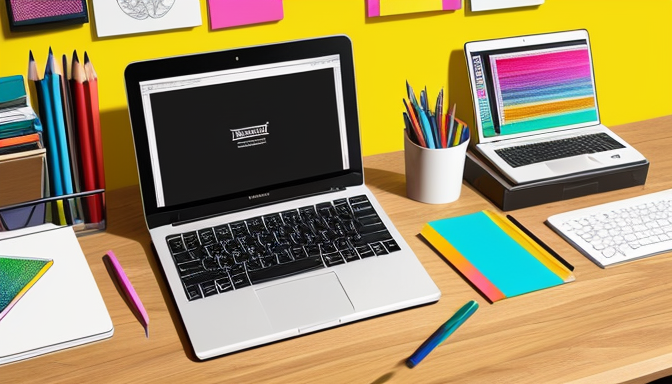Are you ready to take your design game to the next level? Whether you’re a seasoned designer or just starting out, understanding the fundamentals of design is crucial. Design is not just about making things pretty; it’s about creating visual stories that resonate with your audience. So, how do you create those stunning visuals that grab attention and hold it? Let’s dive into some simple yet effective design hacks that can elevate your creative projects.
First and foremost, grasping the basics of design fundamentals is key. Think of design like cooking; you need the right ingredients to whip up a delicious dish. Start by familiarizing yourself with color theory, which helps you understand how colors interact and evoke emotions. From complementary colors that create contrast to analogous colors that provide harmony, knowing how to mix and match can be your secret weapon.
Next up is typography. It’s not just about picking a font; it’s about creating a visual hierarchy that guides the viewer’s eye. Imagine your text as a roadmap: you want it to lead your audience effortlessly through your message. By selecting the right fonts and maintaining readability, you can ensure that your designs are not only beautiful but also functional.
In conclusion, with these easy hacks, you can transform your designs into captivating pieces that stand out. Remember, design is a journey, and with each project, you’re one step closer to mastering your craft.
Understanding Color Theory
Color theory is the backbone of any stunning design. Imagine walking into a room painted in vibrant reds and deep blues. How does it make you feel? Excited? Calm? That’s the power of color! Understanding the relationships between colors can elevate your projects from drab to fab. Let’s dive into the essentials of color relationships.
At its core, color theory breaks down into three main categories: complementary, analogous, and triadic color schemes. Each scheme has its own unique vibe:
- Complementary Colors: These are colors located opposite each other on the color wheel, like blue and orange. They create a striking contrast that grabs attention.
- Analogous Colors: These colors sit next to each other, such as yellow, yellow-orange, and orange. They create a serene and comfortable design.
- Triadic Colors: This scheme uses three colors evenly spaced on the color wheel, like red, yellow, and blue. It offers a vibrant yet balanced look.
Choosing the right palette isn’t just about aesthetics; it’s about evoking emotions and telling a story. For instance, a warm palette can evoke feelings of warmth and comfort, while cool tones can create a sense of calm. So, next time you design, think about the mood you want to convey. Use tools like color wheel apps to experiment with different combinations, and remember, practice makes perfect!

Utilizing Typography Effectively
Typography is like the heartbeat of your design; it sets the tone and communicates your message without saying a word. To really make your designs pop, you need to understand the fundamentals of typography. Think of it as choosing the right outfit for an important occasion—every font has its personality, and picking the wrong one can send the wrong message!
First things first, let’s talk about font selection. Not all fonts are created equal! When choosing a font, consider the mood you want to convey. For example, a whimsical font might be perfect for a children’s party invitation, while a sleek, modern font suits a tech company’s website. Here’s a quick guide:
| Font Type | Best Use |
|---|---|
| Serif | Print media, formal invitations |
| Sans-Serif | Web content, modern branding |
| Script | Creative projects, personal touches |
Next, think about hierarchy. This is all about guiding your reader’s eye through your design. Use different sizes, weights, and colors to create a visual path. For instance, your main heading should be bold and larger, while subheadings can be slightly smaller yet still stand out. This helps your audience digest information easily, making your design not just pretty, but functional.
Finally, readability is key. No one wants to squint at a screen or flip through a brochure that’s hard to read. Aim for a good contrast between your text and background, and don’t cram too much text into one space. White space is your friend—it gives your design breathing room and helps draw attention to the important elements.
By mastering these typography tricks, you’ll not only enhance the aesthetic appeal of your designs but also ensure that your message resonates with your audience. So, are you ready to make your text sing?
Frequently Asked Questions
- What is color theory and why is it important?
Color theory is the study of how colors interact and complement each other. It’s crucial because it helps you create visually appealing designs that resonate with your audience. By understanding color relationships, you can select palettes that evoke specific emotions and enhance your message.
- How can I choose the right typography for my design?
Selecting the right typography is all about balance and readability. Consider your audience and the message you want to convey. Use different font weights and sizes to create a hierarchy, making your text not only readable but also engaging. Remember, the right font can transform your design!
- Are there any quick hacks to improve my design?
Absolutely! Some quick hacks include using grids for alignment, experimenting with negative space, and incorporating contrasting colors for emphasis. Small tweaks can make a big difference in how your design is perceived!
- How can I ensure my designs are accessible?
Accessibility is key! Use high-contrast colors, legible fonts, and ensure your text is readable for everyone. Consider using alt text for images and avoid overly complicated layouts. Making your designs accessible opens up your work to a wider audience.